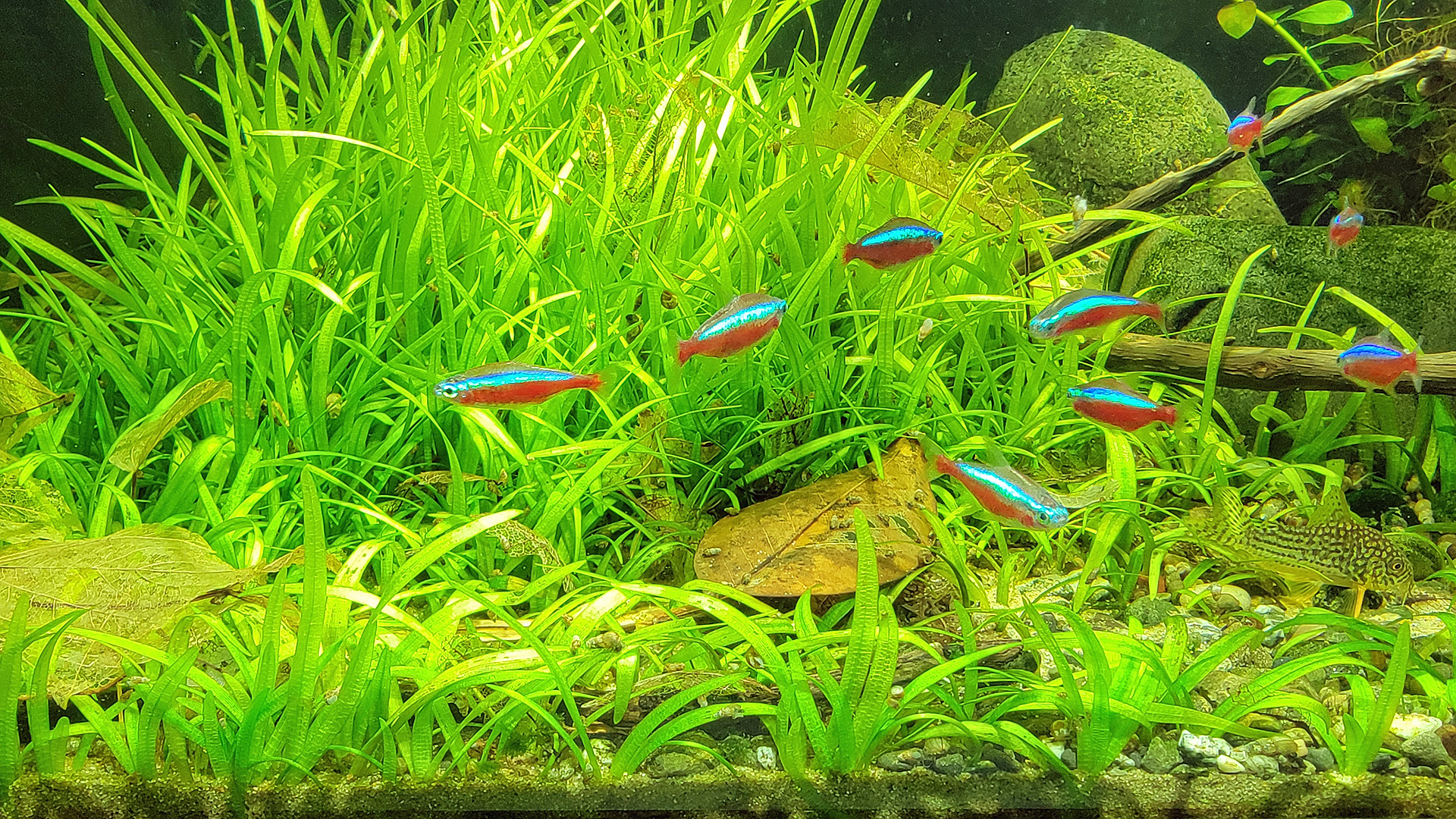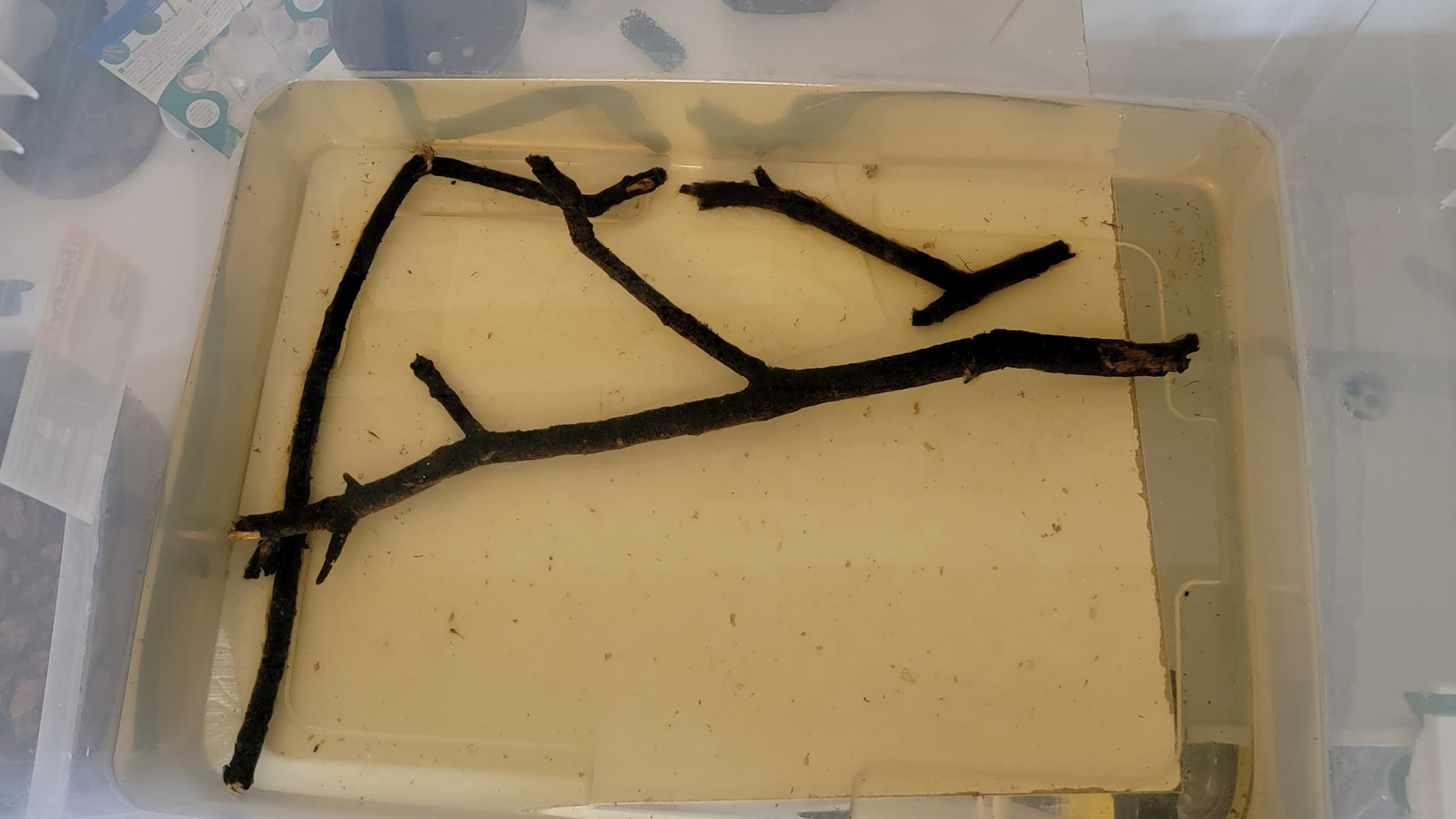Decor

Wood, rocks, leaf litter, aquatic plants, and substrate can all affect how well a system supports the animals hobbyists keep. The materials used in a system can provide a refuge for the fish fry, fish eggs, snails, and shrimp.
It is common for egg-laying fish to be able to maintain a multigenerational population in a well-decorated system. Decorating a system around fish behavior can increase the enjoyment of the hobby. A well-thought-out design will showcase the fish's behavior it exhibits in nature.
Wood and roots of trees and shrubs can make a display look like a natural biotope. These organic materials will slowly decompose in aquariums. The decomposition of these organic materials will add to the bioload.
Wood and roots will leach tannins, making the water a dark tea color. It is recommended that all newly acquired wood or roots be cured in a container with water for six months or more to remove most of the tannins. Changing the water frequently with hot water can help speed up the process.

Wood and roots can be ideal surfaces for brush algae and black beard algae to take hold.

Your local landscape rock yard is the best place to find unique and natural rocks for your display. Landscape rock yards have a variety of rocks that can be used in aquariums. Cobblestone river rocks are typically available in many sizes and colors.
Some rocks can affect water chemistry. Limestone can slowly dissolve in the aquarium, raising the GH, KH, and pH. If you plan on keeping fish that like hard, alkaline water, using limestone in the display is acceptable.
Rocks can also be collected from nature. Rocks only need to be rinsed off before adding to a display.
Algae can colonize rocks, providing a natural food source for algae-eating fish.
One of the natural behaviors many dwarf cichlids exhibit is turning over leaves while they forage for food. Many leaves are acceptable to be used in displays. Like wood and roots, leaves can produce a significant amount of tannins.
Curing leaf litter in a container of frequently changed hot water will help remove a lot of tannins from the leaves. The longer you let the leaves cure, the fewer tannins they release in the display. The disadvantage of curing leaf litter is that it can remove valuable nutrients they release when decomposing.

Many fish, shrimp, snails, and microbes will feed on the biofilm that develops on leaf litter.
Leaf litter does add to the bioload of a system. New leaves can temporarily remove minerals from the water column, but because they are biodegradable decomposing organic carbon (BDOC), they release the minerals as they decay.
Humus from leaf litter decomposition can produce phenolic compounds that inhibit algae growth. Humic substances can also absorb allelochemicals which can lessen the competition between plants.

Your local landscape rock yard is one of the best places to find many forms of natural substrate. Hardware stores often have #30 mesh natural sand in the masonry section that can be used in planted aquariums. Landscape rock yards will also carry #30, #60, and #90 mesh sands.
All substrates will need to be rinsed repeatedly to remove dust. A 5-gallon bucket and a garden hose is a common method hobbyists use to clean natural substrates.
For each inch (2.5 cm) of sand substrate depth, add 7.5 pounds of sand per 100 square inches or 2 kilograms per 1000 cubic centimeters.
Square area = Length x Width
A standard 10-gallon (US) 20 x 10 = 200 sq. in. Two inches of sand would require 15 lbs.
It is always good to have extra dry sand available for areas where plants (Echinodorus spp.) prefer deeper substrate. Also, using a substrate from a system with a mature biome cycle to seed a new system will require backfilling with a new substrate.